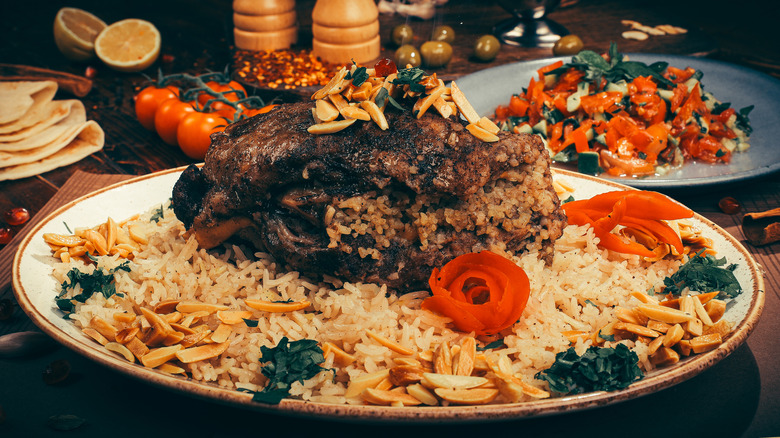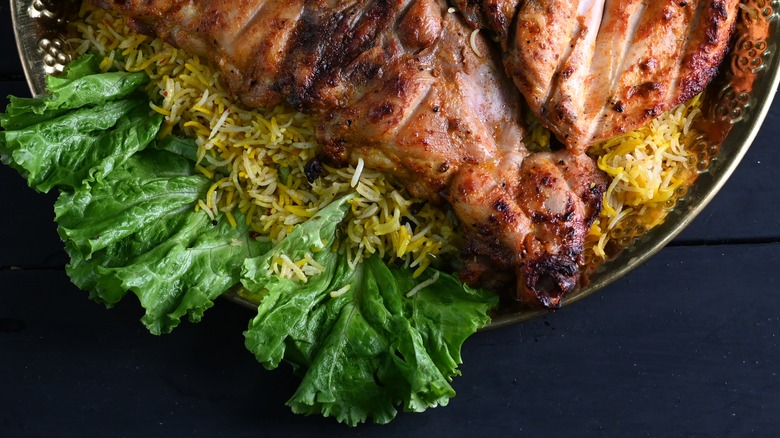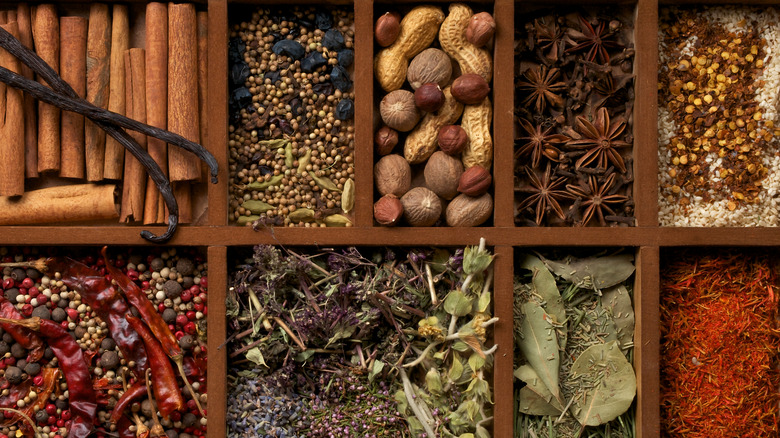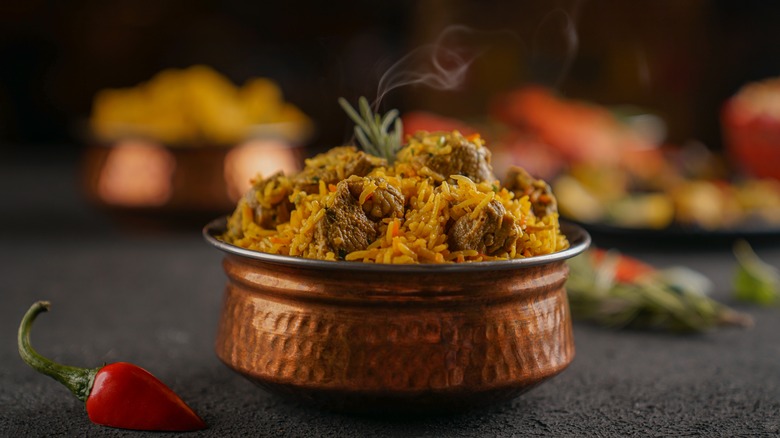Hashweh: The Traditional Palestinian Dish You Should Know About
Hashweh is a filling, aromatic rice dish with a long history that has made its way into cuisines across the Middle East. But, due to the long and complicated history of the region, it's hard to pin down its exact origins. Hashweh seems to jump around through several different countries and cultures.
According to the Palestinian Children's Relief Fund, Palestinians are a group of Arab peoples who currently and historically have lived from the Mediterranean Sea to the east and west of the Jordan River including the Gaza Strip, the West Bank, and modern-day Israeli territories. Due to the long and complicated history of the area, the Palestinian people have migrated, taken refuge, or been assimilated into many of the modern surrounding countries in the Middle East (via History).
With all that overlap, the culture and the traditional cuisine of the Palestinian people have been adopted and enjoyed by the many who have come in contact with them over the centuries. But, also because of this overlap, there is rarely consensus about where exactly this dish originated.
What is Hashweh?
Odds are, if you are a fan of Bedouin-style cuisine, you've heard of hashweh before. Hashweh translates to "stuffing" in Arabic, which gives you a good idea of where this dish comes from and what it is (via New York Times Cooking). When Westerners, especially Americans, think of stuffing, they usually imagine an herbaceous bread and butter mix meant for holidays. While hashweh is a fantastic dish to indulge in on celebratory occasions, it is not the Thanksgiving stuffing most of us are familiar with in the states.
Hashweh is a rice-based stuffing mixed with meat and spices, though exact recipes vary by country. According to Serious Eats, it is typically used to stuff an animal, often a whole lamb, with rice, even more meat, and pine nuts. The stuffing itself can be easily prepared and eaten solo for a quicker, simpler meal. Hashweh is very popular throughout the Arab world, including Syria, Jordan, Palestine, and many more (via 196 Flavors).
What are Hashweh's ingredients?
The ingredients vary, but hashweh is generally made of meat, rice, spices, and sometimes yogurt. Food & Wine's recipe calls for a "nine-spice mix." This particular mix combines allspice, cassia bark, coriander seeds, black peppercorns, cardamom seeds, cumin, cloves, mace, and nutmeg, toasted and ground together into the ultimate spice for meat and rice.
The meat used today has changed dramatically since the days before globalization. Traditionally, lamb was the top choice for hashweh. According to Cafe Meeting Place, lamb has been an integral part of Mediterranean and Central Asian cuisine since the Neolithic era. Sheep were a part of the regions' cultures and could survive the difficult climates and terrain. The animals were raised and eaten across Christian, Jewish, and Islamic religions, making it the ultimate meat to sell. But today, with the global market allowing all kinds of meat to be easily bought and sold, hashweh can be made using any protein. It is also commonly made with ground beef (via Feel Good Foodie).
How is Hashweh eaten?
The dish is commonly prepared in large batches to be used over multiple days to feed a large number of people for cheap (196 Flavors). The stuffing itself is easy to prepare, but more elaborate presentations and meats that accompany it make this dish a holiday special.
According to Arab America, it is common for Arab-American families to celebrate Thanksgiving with hashweh instead of bread stuffing. Hashweh goes well with poultry and squash or other winter vegetables because of its delicious warm spices. But Thanksgiving is only the newest holiday table hashweh has graced. Because lamb is a meat consumed by Christian, Muslim, and Jewish peoples, the hashweh, when prepared traditionally, is a popular meal during Easter, Passover, and Ramadan (via Cafe Meeting Place).
As we said before, hashweh is often served with lamb, but there are quite a few variations of this dish today. It is used as a stuffing for kibbeh, made with vermicelli rice and Lebanese beef meat pies (via A Pinch of Adventure).



